Naim Uniti Network Player, CD player and Amplifier
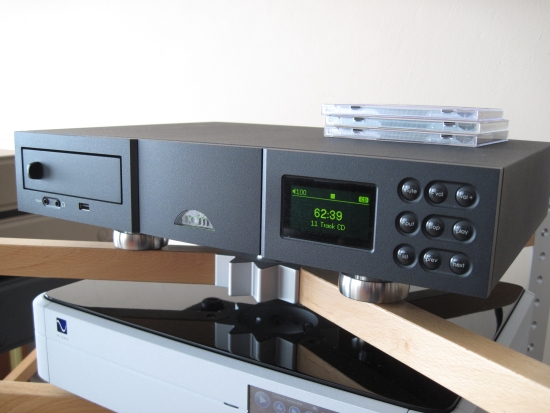
The Uniti is the UnitiQute’s bigger brother, with a cd player added, a bigger amplifier and more inputs
The only thing it lacks is a digital output. This clever and handsome device is designed as a one-stop solution.
Review sample supplied by distributor Latham
Retail price 3000 euro
Please read the UnitiQute review too, as these two components have much in common. Also, there’s an interesting comparison of the streamer part’s coaxial digital output, connected to the Mark Levinson no.360S DAC. The Uniti lacks a digital output but is otherwise better equipped than its smaller brother.
The Uniti can be considered a full-fledged all-in-one solution but that would sell its individual parts short. It is not just an ordinary all-in-one: it is an excellent cd player; a super-user-friendly wired+wireless UPnP/USB music streamer; an FM/AM/DAB tuner; a high-class DAC; a flexible preamp with digital and analog outputs and a 50w stereo power amplifier. It is all these devices in their own rights. But the Uniti, like the Naim-, er, name says, unites them all into a coherent whole. There are 3 analog inputs (cinch), 4 digital inputs (2 cinch, 2 toslink), a turntable input (DIN), an ipod input (not USB), 2 subwoofer outputs, stereo preamp outputs (both cinch and DIN), a wifi-antenna connector (antenna supplied) and of course stereo speaker connectors (banana/BFA). But that’s only the rear panel, there’s also the front panel which has a 3,6mm stereo jack/optical in, 3,6mm headphones and a USB input. Incidentally, the built in amplifier isn’t just an afterthought: it is derived from the Nait 5i integrated amplifier.
You’d think that all this functionality would come at the cost of user friendliness, but rather the opposite is the case. Unpack it from the box and the Uniti can be playing music from any source in your house within 30 seconds, without you ever having to read the manual.
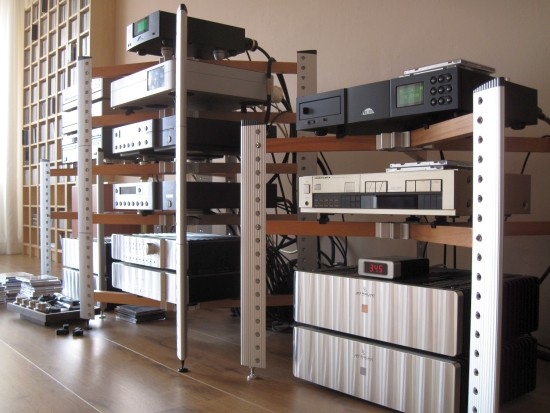
Setup is dead-easy: connect it to ethernet (or wireless if you are so inclined) and the UnitiQute finds the NAS by itself. Within 30 seconds you can browse the NAS’ contents using the UnitiQute’s front panel nicely bright OLED display and the IR remote control. This works smoothly, quickly and flawlessly. But it gets even better when you download the N-Stream app on your ipad, iphone or ipod. This app only works with Naim equipment but is very sleek and intuitive. It is also a lot more stable than the PS Audio’s eLyric app, but that probably has more to do with the PWD than the app itself. After running the N-stream app, again, setup is dead-easy: you just select the device from an auto-discovery list and in a couple of seconds you’re browsing the NAS and playing music. Setup is so easy and so intuitive that anyone can do it without a manual, even if you’re not computer-oriented at all. What’s more: not only does the N-stream app let you control track selection on a NAS: you can also control much of the UnitiQute’s functionality such as input selection and volume control as well as full CD player control. Well done Naim.
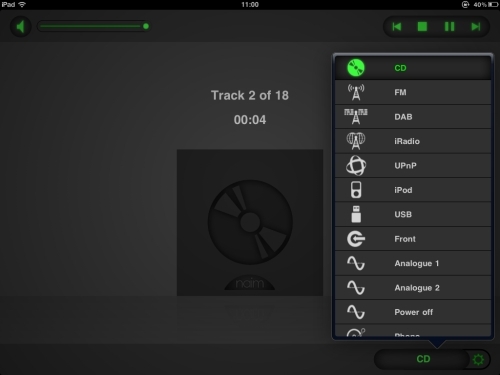
One downside to the App and IR control alike is that there is no search function. I play a lot of 96khz LP recordings that consist of 1 track. Going to the next track or to the B side is not possible. Another downside is the lack of any playlist functionality. You can play any track directly and it will play the consecutive tracks in order, but that’s it. Simple and effective, but slightly lacking in functionality.*
What’s going for the UnitiQute though, is its full control via IR remote. This is something that’s sorely lacking with the PWD. The latter may have a touch screen for various functions but you can’t do any browsing there, not even skip a track. Play/pause is all you can do with respect to transport control. The Uniti gives you full control, be it via IR or an i-device via wifi.
The ipad/iphone/ipod app even gives full control when playing cd’s!
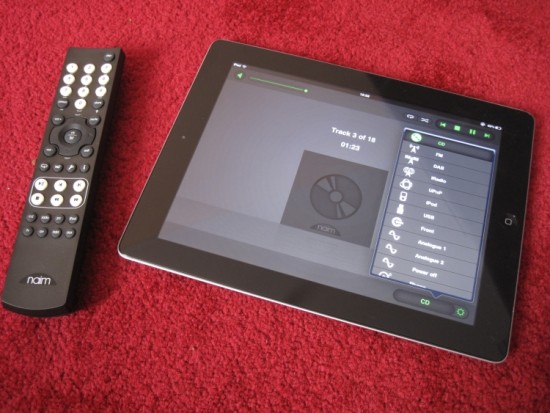
Compared to the UnitiQute
Comparing the Uniti’s analog line outputs to those of the UnitiQute, the differences were quite unexpected, the smaller UnitiQute being at once more powerful, more luscious, with smoother treble and a more solid soundstage. At first the Qute seems more impressive because of this.
After longer listening, I noticed that the Uniti had better transparency and resolution. But its bass is less ballsy than that of the Qute. I didn’t see that one coming! I figured: bigger device: bigger amps: bigger power supply: bigger bass. But maybe I’m wrong there because Naim always pays a great deal of attention to its powersupplies. The one inside of the Qute is already very big, with a sizable transformer, taking up almost a third of the available space. The Qute has incredible bass, compared to any streamer out there, minus the PS Audio PWD. In fact: it was the Qute’s bass that first grabbed my attention. In a later stage I noticed that its treble and midrange are ever so slightly unpolished and it is in these areas that the Uniti shines. The Uniti is fluid from top to bottom: it has no rough edges. Is sound is very refined and utterly neutral. It is neither dry nor sweet, but definitely not clinical. It is still a very enjoyable sound. Just less colorful/more neutral than that of the UnitiQute. Which is better? Well, I’d say that that is a moot matter because different though they are, they are both competent and musical performers and the choice between the two may well come down to taste and the match with the other equipment. Also, the Qute’s preamp outputs are meant to drive power amps and at its highest setting has a much higher output level than the Uniti’s line outputs, which may cause the subjectively more powerful delivery and may possibly also drive my preamp’s inputs better. Even though I compensated for the difference in output level, the Coherence II has transformer inputs with tremendous headroom that normally are fed higher balanced signal levels. The UnitiQute sounded just as loud as my balanced sources which means that it has ample output. That’s fine for my preamp, and even better for poweramps, but you should check with your preamp to see if it can handle the Qute’s maximum volume setting. You may need to lower it to about 70 to avoid overdriving your preamp’s inputs.
Oh, and the Uniti has a cd player thrown in. Pah, just an ordinary cd-rom drive, you think? Think again! Incorporated is a proper Philips VAM1202 audio-only cd mechanism, in Naim’s proprietary swing-out drawer. This transport is specially adjusted by Naim and supposedly not swappable with a standard VAM1202. Make no mistake: the Uniti is also a splendid CD player!
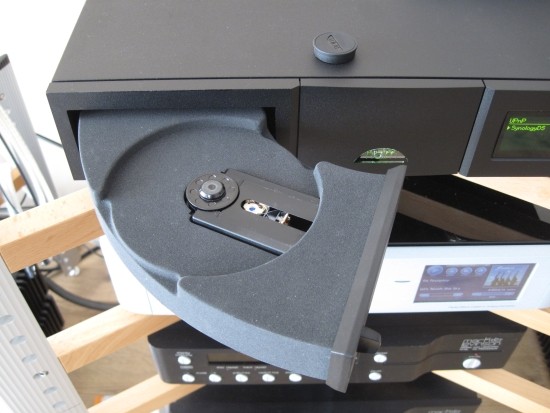
Tweaking, or, adjusting the circumstances to better match the Uniti’s character
Of course, all the above was under identical circumstances, in the same position on the Spider rack, on the same Cerapuc feet, with the same interlinks and the same powercord. The latter, a Belden, was now up for a swap as the Unity’s slimmer, more neutral sound begged for a sweeter sounding cable. So, in came a Lapp with IeGO connectors. While the resulting sound was friendlier, it was also diminishing the Uniti’s fine detail and resolution, so in came the hideously expensive Echole Obsession. Now, that was a much better match. But now the bass was thinner than with the Lapp. So, because I liked what the Echole did, I left it in place but replaced the Cerapucs with standard Spider rubber feet. Presto: balance restored. Now, the sound was at once detailed, transparent and smooth. It still wasn’t as big’n ballsy as the UnitiQute, but this was perhaps a more high end rendition altogether.
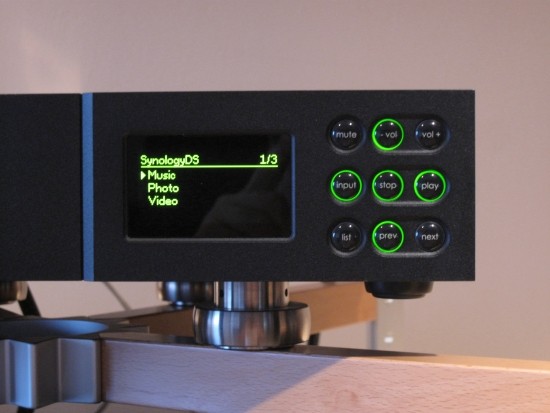
Above: Whenever in a menu structure such as a NAS directory, or the Uniti’s own system settings, the appropriate arrow buttons light up. Nice touch.
Quick comparison to the Olive 04HD music server
While the Uniti doesn’t have the Olive 04HD’s all out slam and dynamics, it is no slouch in those areas either. It offers plenty of drive and attack while avoiding the Olive’s hardness, introducing better treble extension as well as a more gentle, more musically pleasing presentation.
Streaming Audio compared to CD replay
I was very interested in comparing the sound of the Uniti’s built in CD player to that of the Uniti playing the same cd, ripped to WAV and playing from a NAS. This was particularly interesting to me personally because of my PS Audio PWD. The latter is a splendid streamer that shows all other computer audio replay solutions I tried a thing or two. But good as it is, it has one area that I don’t like, which is its treble. In short it is dry, low in resolution and seemingly limited in extension. The comparison with the Naim UnitiQute already showed that this is mostly accreditable to the PWD’s DAC and analog output stage but the Naim Uniti provides an even more meaningful comparison because it handles the task of playing cd’s and streaming audio completely by itself.
Streaming is done from a Synology NAS, connected via 2 switches and standard CAT6 ethernet cable.
You should know that I’m not entirely convinced that Hard Disks are inherently better for music replay. Sure, from a technical viewpoint they may well be, but the end result, the music that emerges from the speakers, isn’t necessarily more emotional or more entertaining. You should also know that I sometimes perform unfair comparisons when comparing computer audio and streaming audio to state of the art CD players costing upwards of 10.000 euro. But I make these comparisons and mention this because I feel that it is important to keep the perspective. Just like when CD overtook LP for the masses, and the masses agreed that CD was much better, the audiophile crowd disagreed. Of course these days, as well as back then, there was no big right or wrong. Both crowds were right. The CD crowd was right because CD did have the potential to sound better than a regular turntable with a worn-out, mal-adjusted cartridge, playing into a less than optimal phono input on an integrated amplifier. The audiophiles were also right because a turntable with a good cartridge, adjusted carefully and combined with a proper phono stage, has the potential to kill even the best CD players around. I know this because I have personal experience with it. Why am I writing all this? Because it is important to understand that all things are relative. In life, but perhaps even more so in audio.
Back to the Naim Uniti. After I first heard its streaming quality, I already knew that it didn’t suffer from the same problem as the PWD. Treble was quite fluid and extended and showed no signs of hardness. In fact, the Uniti never failed to convince sonically. I felt that it could do with some more fulness of color, some more substance, but otherwise this was a very-well balanced sound. Not dry or clinical but neither slow or dull. I’d say it was smack in the middle of neutrality. Importantly, without tipping over into blandness. The Uniti was always involving yet never shouty.
I tried many CD’s in various music styles, to get a good hold on the differences. The first thing you notice is that the bass is firmer and the stage more solid when streaming. There’s more power and drive when streaming than when playing the cd directly. Focus also seems better. after I heard this, I started to understand why many people say that streaming can sound better than CD. With rhythmically-driven music, I preferred the Uniti’s streaming quality over its cd replay. But there are other differences too. For one, even though the Uniti didn’t sound like the PS Audio PWD at all, and definitely didn’t suffer from the latter’s treble dryness and lack of air, it did sound slightly airier when playing CD’s. Also, there was some light-footedness that can be appealing when listening to more gentle music than Michael Jackson. After having listened to many cd’s and their streaming WAV counterparts, I have to conclude that there are still differences between CD replay and streaming audio, but they are smaller than many people might care for, and indeed fall in favor of streaming with respect to bass fulness, drive and dynamics. So there you have it: when comparing streaming to cd replay on equal ground (ie not comparing a 1000-euro streaming product to a 10.000 euro cd player), there is a lot to say for streaming. Lest we forget: you’re not abandoning cd’s altogether as the Uniti still plays them, and plays them well!
To put all this into perspective, I compared the Uniti playing CD’s to my old Marantz CD80, playing the same CD, using the same interlink. Now there was a surprise! The CD80 was never my favorite Marantz, but I value its treble smoothness and its liquid, musical presentation. But compared to the Uniti it just sounded lame. All the forcefulness of Michael Jackson’s Bad was gone, in its place a gentle, but boring sound. But with the Naim, I felt that I missed some body and fullness.
Time to up the ante then. In comes my Levinson no.390S CD player, just back from repairs. Even though the 390S held its own on many aspects such as refinement & subtlety, soundstage, low level resolution and full-color presentation, the Uniti, even when playing CD’s, not streaming, sounded more taut, fresher and more incisive. I knew that the Levinson wasn’t the most lively player around but it excels when playing the smooth music styles I like so much. The Levinson sounds tonally fuller and more complete and has more authority. But when playing rhythm-driven cd’s, such as this Michael Jackson recording, it actually sounded more impressive on the Naim. When streaming, the difference became larger in the same direction with rhythm becoming even stronger but treble also drier. This means that not all music styles will benefit but still, I liked Michael better on the Naim.
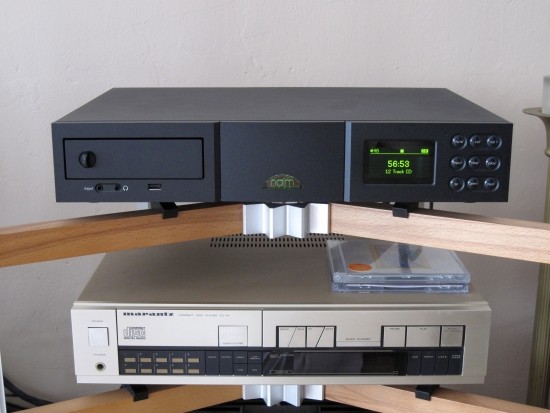
Used as an integrated, with its own amplifier
Latham supplied a speaker cable as well: a Naim NACA5 and that’s what I tried first. I connected the Nautilus 805’s from the cinema room directly to the UnitiQute first and did my listening tests with the supplied Naim speaker cable, which you can read here. After that, I swapped the UnitiQute for the Uniti and resumed listening. Just like with the UnitiQute, from the very first notes I played, I was mightily impressed.
Like with the Qute, there was immense power and drive, in spite of the 50 watts. The Uniti didn’t sound more powerful than the Qute per se, but did sound more authoritative, more complete. Contrary to the outcome when the two Naims were used with their line outputs, where the Qute was more forgiving and fuller sounding, used with their respective built-in amplifiers, the difference is somewhat reversed with the Unity being my preferred device.
The Uniti had a fuller sound, with deeper, albeit not fuller, bass and a slightly more relaxed midrange and more fluid, more gentle treble. All this, without losing any of the speed and drive that the Qute was so good at. This was like a more grown-up version of the UnitiQute. Switching back and forth between the two, these differences were substantiated and while I still enjoyed the Qute and am still amazed at what it achieves from such a small enclosure, my preference went to the Uniti for its more refined delivery.
Like the UnitQute, even driving the not entirely easy to drive N805’s, the Uniti can produce sound levels that are just unbelievable. No matter how loud you crank it, the sound stays solid and powerful. Bass is full, articulate and deep, midrange is clean and clear and the treble is extended and airy. Even more so than with the Qute, there was absolutely no hardness or roughness to the sound, and there was plenty of detail. The Uniti produced a huge soundstage if it was on the recording. If it wasn’t it would just play in an intimate manner. Never anything less than musically engaging, I can say very little against it. It was funny to realize that all this equipment, including the large Magnepans, were now just standing by and all this sound was coming only from the Unity alone. No highend accessories or expensive cables: only the Uniti. The classic Naim sound (brutal but communicative) is even less present here than with the Qute. The Unity can sound polite, smooth and intimate depending on the recording. But it doesn’t polish the sound. It doesn’t add a rose-tinted glow on all music. But Neither is it ragged or shouty. I’d say that it sounds highly-neutral. This sound in fact reminded me a lot of the sound of the Accuphase DP400 I had on visit a little while ago. Like the Naim, the Accuphase just sounded neutral without going too much into a clinical or analytical approach. But there was a mild forwardness in the Uniti midrange. It was less obvious here than with the Qute, but it still made for excellent communicative skills. Its openness makes for splendid engagement. I often found myself tapping my feet and really getting into the recording.
The UnitiQute is still a little more forgiving because of its more colourful sound and is still highly enjoyable, but compared to the Uniti, it sounds less grown-up, less highend. And you wouldn’t notice this just by listening to it, but compared to the Uniti, the Qute sounds a tiny bit synthetic. The Uniti is clear from any artificiality, sounds more pure and real and does indeed have the signature of highend sound. It has a sound quite different from my usual super-smooth Rowland sound, but it has a lot going for it. If I had one more room, I might give thought to adding one to my family.
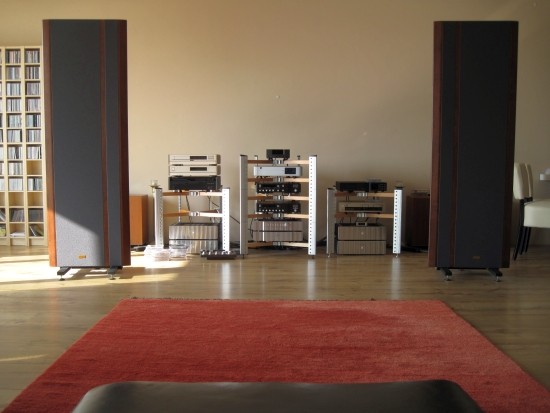
Conclusion
The Uniti is truly a universal product. It plays any music format from any source splendidly. It excels mostly with rhythm-driven music, with which it is highly impressive playing from cd and even more impressive when streaming. Even when judged merely on its streaming merits, using the preamp outputs, it plays almost in the same league as the PS Audio PWD and it outclasses Sonos/Squeezebox by a large margin. Its built-in amplifier sounds way more powerful than you’d expect, given its 50 watts, with pure, deep, articulate bass, an open, communicative midrange and a clean and open treble. The Uniti sounds highly neutral without tipping over into a clinical or analytical sound. Highly communicative and just plain musical, the Uniti manages with easy to evoke an emotional response when listening to any music from just about any source you care to connect.
3000 euro for an all-in-one solution including cd player that sounds this fantastic? I’ve called the Unitiqute an almost-bargain, but this one must be it!
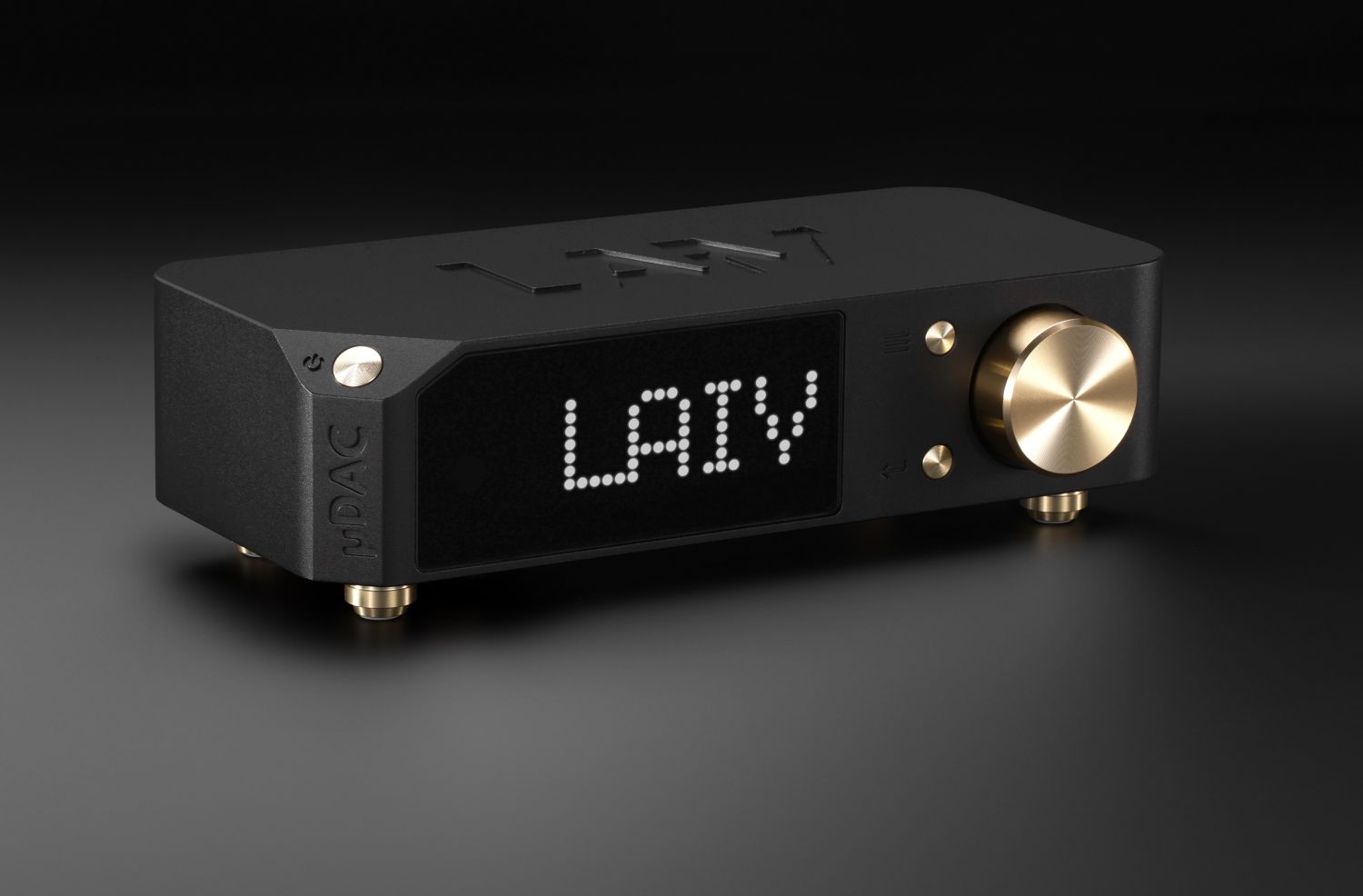
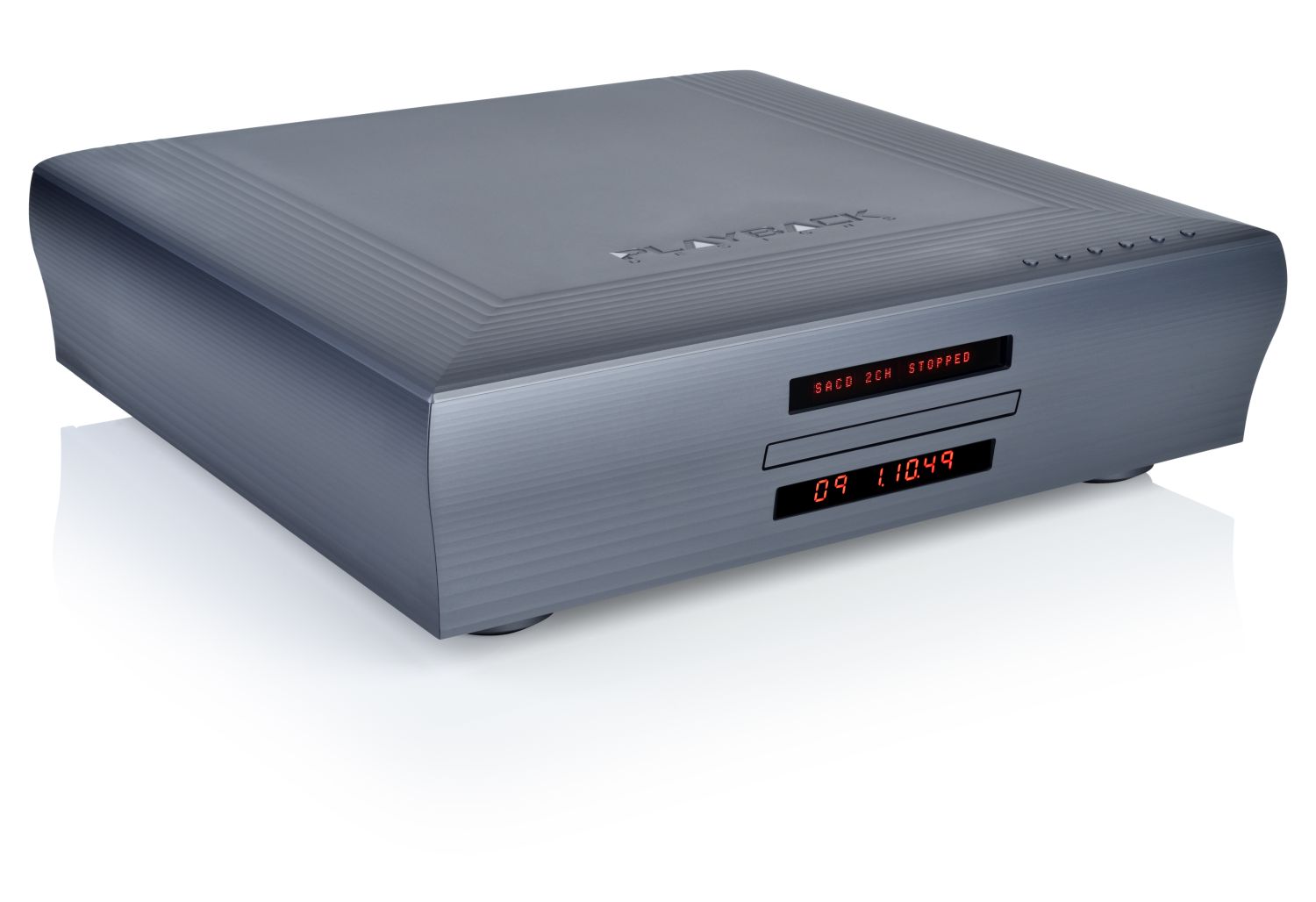






Excellent Review, I bought not long ago one Naim Uniti in mint condition and now I think will be able thanks to your review to use this wonderful unit. Thank you Christiaan